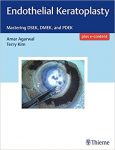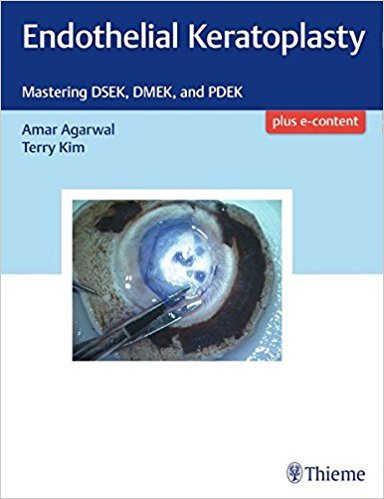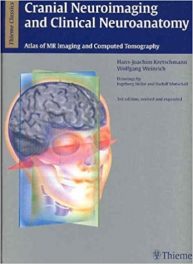 Editors: Amar Agarwal, FRCOphth, and Terry Kim, MD
Editors: Amar Agarwal, FRCOphth, and Terry Kim, MD
Publisher: Thieme – 188 pages, with 592 illustrations
Book Review by: Nano Khilnani
Endothelial keratoplasty (EK) is one of the hottest topics in ophthalmology these days, being a rapidly-growing field in corneal surgery, with surgical procedures that have revolutionized corneal transplantation, providing new, valuable benefits to patients. The editors of this pioneering book and the authors of the articles contained in it, point out that a significant number of eye disorders result from the endothelial layer of the cornea. Endothelial keratoplasty procedures help patients in several ways including:
- Sparing them from months of refractive adjustments
- Overcoming lengthy recovery periods
- Avoiding poor outcomes associated with full-thickness penetrating keratoplasty
The new EK procedures are based on more selective transplantation of cells, and are less invasive, resulting in quicker recovery and more efficacious outcomes.
Thirty-two specialists in ophthalmology, including corneal, ocular and refractive surgery, and ophthalmic clinical trials and research, from around the United States and three other countries – Brazil, India, and the Netherlands – authored the 23 chapters of this book. We name below its four Parts and what they cover:
Part I – Basics – covers such topics as anatomy, continuing with a history of EK procedures, followed by clinical diagnoses and investigations of endothelial cell dysfunction, and it ends with clinic-pathology of corneal endothelial disease.
Part II – Surgical Techniques – covers DSEK, ultrathin Descemet automated endothelial keratoplasty (DSAEK), DMEK, techniques to unroll the DMEK graft in difficult situations, PDEK, trocar anterior chamber maintainer (an improved new concept for infusion), surgically mastering the PDEK in 15 steps, air-pump-assisted EK, endo-illuminator-assisted DMEK and PDEK, and DMEK modifications and non-keratoplasty concepts.
Part III – Endothelial Keratoplasty in Special Situations – covers endothelial keratoplasty with PDEK with Glued Intraocular Lens (IOL), endothelial keratoplasty with glaucoma, PDEK in failed grafts, and PDEK with scarred cornea.
Part IV – Surgical Outcomes, Complications, and Future Trends – covers optical coherence tomography (OCT) in endothelial keratoplasty, spectral domain OCT evaluation in PDEK grafts, complications in DSAEK, complications in PDEK, and eye bank preparation of endothelial keratoplasty grafts.
Aside from the contents of this printed work, you can also view online the surgical videos on DSEK, DMEK, Glued IOL, and PDEK by visiting www.MediaCenter.Thieme.com, When prompted during the registration process, enter the access code provided on the front page.
Among the important features of this unique book on this new and exciting field are:
A large number of superior-quality videos that demonstrate the innovative approaches
- Almost 600 images that detail anatomy and techniques
- Anterior segment surgery advances including:
- Descemet’s stripping endothelial keratplasty (DSEK)
- Predescemet’s endothelal keratoplasty (PDEK)
- Descemet’s membrane endothelial keratoplasty (DMEK) and trocar anterior chamber maintainer
- Treatment of conditions such as pseudophakic bullous keratplasty and Fuchs’ dystrophy
- Management of complicated cases such as Glued IOL, cataract extraction, and IOL implantation, failed grafts, and scarred corneas
To get a better grasp of what you will find in this book, let us take a look at the topics discussed in chapter 3, Clinical Investigations and Diagnosis of Endothelial Cell Dysfunction, authored by Joelle A. Hallak, Peter Wu, and Dimitri T. Azhar:
Introduction
- Endothelial Cell Dysfunction
- Endothelial Dystrophies
- Pseudophakic and Aphakic Bullous Keratoplasty
- Clinical Examination
- Diagnosis and Testing
- Specular Microscopy
- Ultrasonic and Optical Pachymetry
- Anterior Segment Ocular Coherence Tomography
- References
A large number of different types of images are presented in this chapter, as is the case with other chapters as well. This is an excellent book on a relatively newer field in ophthalmology, and it is authoritative, with 32 specialists discussing various aspects and types of endothelial keratoplasty. This is a must-have book especially for cornea surgeons.
Authors:
Amar Agarwal, MS, FRCS, FRCOphth is Professor of Ophthalmology at Ramachandra Medical College, and Chairman and Managing Director of Dr. Agarwal’s Eye Hospital and Eye Research Center in Chennai, India. He has edited over 70 books on ophthalmology since 1998.
Terry Kim, MD is Professor of Ophthalmology at Duke University School of Medicine, Chief of Cornea and External Disease, and Director of Refractive Surgery Service at Duke University Eye Center in Durham, North Carolina. He has written over 200 journal articles in peer-reviewed literature, being the author and editor of some of the most important books on corneal diseases and cataract surgery.







